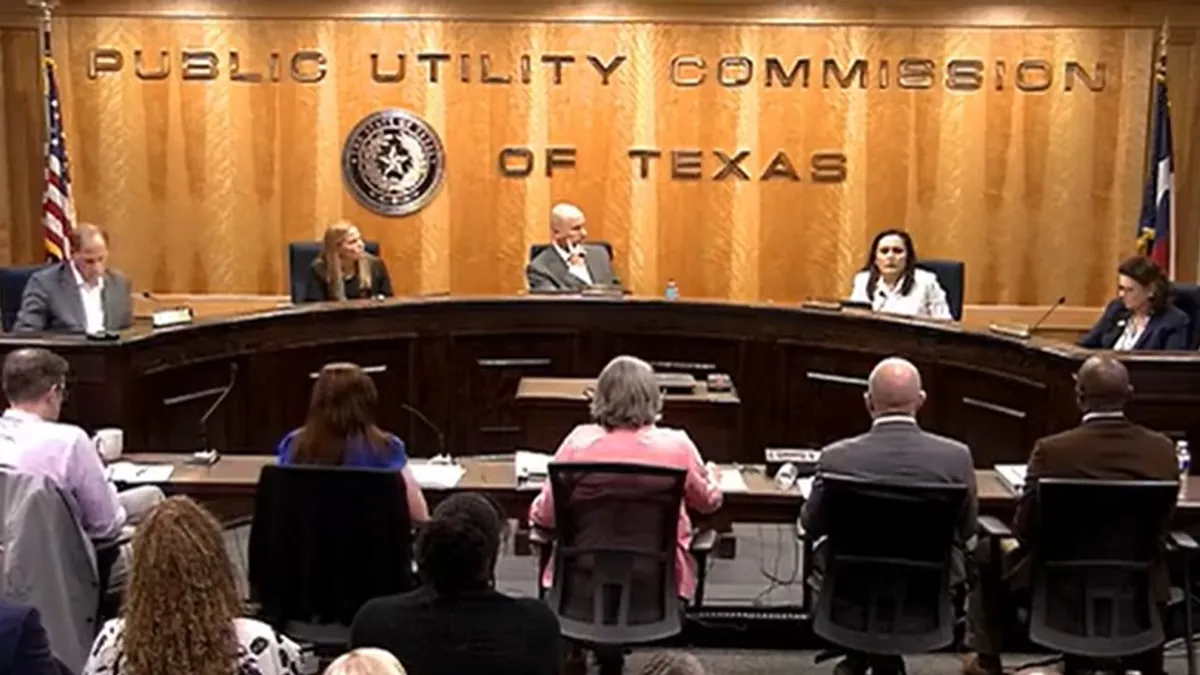The following is the third of a three-part guest post series from Robbie Orvis, policy design projects manager, and Eric Gimon, senior fellow at the analysis firm Energy Innovation.
Part I of this series discussed how low energy prices and falling revenues are largely caused by surplus capacity, low gas prices, and unwillingness to retire uneconomic plants. Complicated solutions to increase revenue, like the two-part capacity market proposals in PJM and ISO-NE, will only make matters worse, as outlined in part II.
Where does this leave us? Some stakeholders argue payments in furtherance of broad state policy goals like clean air are not market manipulation and should not be treated as such. Others wonder why generators need more money if reliability isn’t at stake. Economists fulminate that markets are inherently risky and that participants, especially generators, enter with this knowledge. And some market operators and generators argue that without changes, long-term market viability is at risk.
In this piece, we articulate principles to guide policymakers managing markets for an evolving grid.
Principles for moving forward
Policymakers’ mission is achieving a clean, affordable, reliable grid in a just and reasonable way where markets and regulation work collaboratively with other public policy goals. Three principles best enable policymakers to succeed in this mission:
-
One market to rule them all: Energy markets, which reflect the grid’s physical constraints and create value for desired capabilities, should be the dominant revenue stream in markets.
-
Pay only for what you need: Markets should define technology-neutral and granular services the grid will need now and in the future.
-
Minimize market interventions: Every market tweak introduces new investor uncertainty and risk. Policymakers should only intervene when absolutely necessary, allowing markets to equilibrate and provide appropriate price signals, without shifting risk to customers.
One market to rule them all
Electricity spot markets trade in the delivery of electricity. These markets work well because they align revenue with the instantaneous supply and demand for electricity; generators and load change output and consumption in response to prices. Because spot markets incorporate factors like fuel prices and environmental compliance costs, they efficiently promote an evolving resource mix, allowing the lowest-cost technologies to generate electricity first.
Energy markets play two distinct but complementary roles. First, they manage real-time electricity supply and demand through price signals reflecting the physical constraints of the grid. Spot markets do this especially well.
Second, markets create a long-term investment signal by delivering average revenues to plant owners sufficient to make plants economically viable. To stay in business, the average revenue a plant receives over time must be equal to or more than its all-in average cost, including production and capital costs.
Generators recover capital costs through spot markets when prices are higher than production costs. Markets yield higher prices when units that are more expensive set the price, based on supply and demand, and through occasional scarcity pricing. While a plant’s average revenue will vary year-to-year, over the long-term plant owners should earn revenues covering their all-in costs.
To be sure, spot market dynamics are a careful balancing act, since markets running on real-time production costs must allow for long-term revenues sufficient to cover all-in costs and desired reliability levels. In some regions, market operators have implemented capacity markets to ease this balancing act, but capacity markets are a double-edged sword.
At their best, capacity markets are functional alternatives to scarcity pricing in energy markets – they administratively remove some investment risk to ensure resource adequacy in times of stress. At their worst, capacity markets shift money out of energy markets, destabilizing the relationship between short-term and average prices while divorcing financial compensation from the grid’s physical demands. They tend to result in over-procuring capacity, reducing price signals in the energy market, and diminishing the value of certain capabilities.
To maintain efficient pricing and signals for necessary system capabilities, the energy market should dominate revenues for generators, with other markets comprising as little a share of revenue as possible.
How is this achieved by policymakers?
-
FERC: Focus on maintaining as robust a spot market as possible, ensuring non-discriminatory access to energy markets to the widest range of supply and demand resources possible.
-
RTOs: Keep the highest possible share of revenue in energy markets. RTOs should make energy markets more robust and price capabilities more granularly.
-
States: Markets will not always deliver on state policy objectives, warranting state action. States have significant leeway to shape their generation mix, provided it does not impinge on FERC’s authority to set just and reasonable rates. States should continue pursuing legitimate policy goals within the framework established by RTOs.
Long-term energy market stability concerns should be addressed by broadening access to new technologies and business models, making the market more resilient, adaptive and responsive to customer desires.
Pay only for what you need
Additional mechanisms may be necessary, even with a strong energy market. Policymakers can succeed with these mechanisms by providing payments for exactly and only the services needed to maintain a nimble and reliable grid.
A rigorous quantitative decision-making process for new rules and products is central to this goal. Once the demand for services is established, policymakers can then decide how to acquire these services, focusing on least cost options. Minimizing costs means allowing all resources that have the ability to provide needed services compete to do so.
Certain services may need to be procured administratively, like those governing frequency regulation, because they deal with operational interventions on shorter timescales than market transactions and are essential for grid stability.
In other instances, interventions may complement spot markets, like operational reserve demand curves, so they can be directly integrated with the energy market.
Other services that may require complex products, like capabilities markets or direct payments for new services, as these products may be difficult (or impossible) to value in the market and may need to be procured ahead of time.
For all these interventions, policymakers should simultaneously consider exit strategies during implementation. Once a new revenue stream exists, can revenue gradually be shifted back into energy markets? Must new products be directly bought and sold, or could they exist instead as optional derivative products? These questions are central to minimizing costs while maintaining reliability.
How can policymakers pay only for what is needed?
-
FERC: Continue promulgating rules enshrining resource neutrality. Careful analysis should underlie any requirements for specific technologies. For example, FERC is proposing that all resources provide frequency response, but if unbundled, this service could be procured in markets at lower cost.
-
RTOs: Focus on creating new products, rule changes, and procurement targets only when new services demand is demonstrated unequivocally, and only for the service needed, allowing all resources to compete to provide the service. New products and requirements should not distort energy markets and should preserve price signals.
-
States: Recognize that market costs are passed through to consumers, and ensure that any approved procurement minimizes these costs and avoids over-procurement of resources and services.
Minimize market interventions
Upon joining competitive markets, generators implicitly accept the volatility of participation. Spot market revenues can change rapidly with changes in technology, input costs and policy.
By providing signals for entry and exit, markets efficiently calibrate the careful relationship between short-term and long-term energy market roles, but these signals can take some time to have their full effect. Policymakers should be patient and extremely conservative when deciding to intervene in energy markets, in order not to disturb this careful balance.
Markets adjust over time to shifts in costs and state policies, but struggle to operate efficiently when price signals are masked. For example, capacity markets can easily incentivize too much capacity, eroding all resources’ revenues and dampening energy market price signals. With weaker price signals, the least needed units, which should exit the market during times of oversupply, are less pressured to do so.
Furthermore, past experience suggests that rather than retire during times of low revenue, these least-needed resources push for further capacity market tweaks to increase revenue, leading to a vicious cycle of market “fixes,” which drive revenue out of the energy markets and encourage oversupply.
These interventions have serious resource mix consequences. Changes to capacity market rules in PJM for example, caused a massive amount of demand response capacity, which was helping lower customer costs, to disappear. Making matters worse, the costs of these interventions, especially in capacity markets, are often borne by customers.
Minimizing interventions comes down to maintaining market design simplicity and transparency. Simplicity isn’t having the fewest market rules, but cleanly aligning rules with market operator core competencies and requirements. Nodal spot markets with security-constrained economic dispatch are complicated, but the quantitative need is clear and the solution focused on matching supply and demand efficiently and reliably.
On the other hand, a capacity market with a single annual obligation to provide capacity may seem simple, but doesn’t clearly align with the probabilities of system stress in each dispatch period or the market’s ability to pool resources.
How can policymakers minimize interventions?
-
FERC: Continue to ensure that proposed changes by RTOs are quantitatively just and reasonable. Question appeals to vague needs without demonstrated demand for changes. Where discriminatory market practices exist, promulgate rules ensuring fair treatment of, and eligibility to provide services for all resources.
-
RTOs: When market changes are considered, quantitatively demonstrate the need for new services and clearly articulate how those services will improve the market. Solicit and value input from diverse stakeholders, including public interest organizations and resources.
-
States: Proceed cautiously when contemplating policy affecting electricity market mechanisms, rather than working within market frameworks. Look holistically at other states’ policies to identify co-benefits for your state, and recognize benefits of working together.
Final thoughts
Wholesale markets and state policy are compatible. State policymakers continue looking for ways to provide electricity more affordably, reliably, and cleanly. To achieve these goals FERC, states and RTOs should foster a return of revenue opportunities to the energy markets, using these to create value for needed services.
When extra payments are needed, policymakers should obtain only what is needed, and minimize costs by allowing all resources to compete. Market modifications should only be implemented after rigorous analysis and input from all stakeholders, minimizing risk to all resources and retaining risk with the market participants, who implicitly take on this risk when choosing to participate in markets.




















